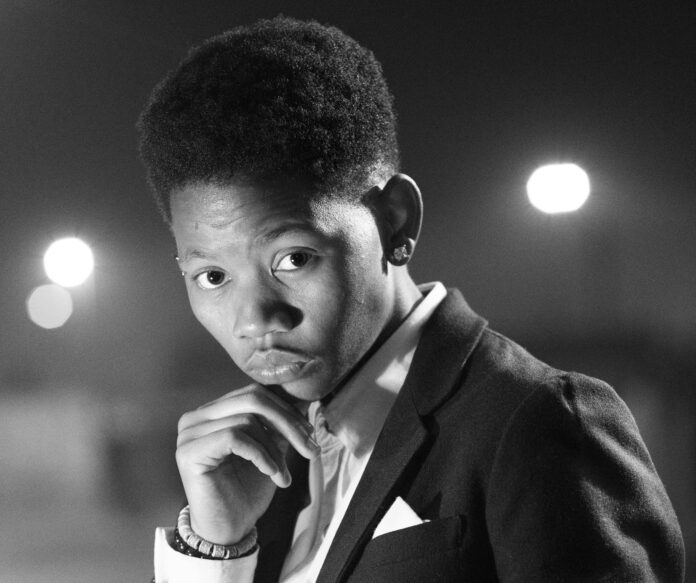While Cape Town-based photographer Zanele Muholi is most known for their high contrast black-and-white self-portraits, in their solo exhibition “Eye Me” at SFMOMA, the artist boldly presents their self-portraits in the very last gallery, dedicating the first three galleries to portraits of South African LGTBQ+ friends and community members. As Muholi’s self-portraits have explored their own race, gender, and sexuality with intimacy and sometimes a poignant humor, they’ve turned the camera on others to create four distinct photographic bodies of work (“Only Half the Picture,” “Brave Beauties,” “Being,” and “Faces and Phases”), along with additional photos and videos. Most powerfully, Muholi’s conscientiousness is evidenced in their careful consideration of what and how much to reveal and how the individuals choose to represent themselves and the South African LGBTQ+ communities.
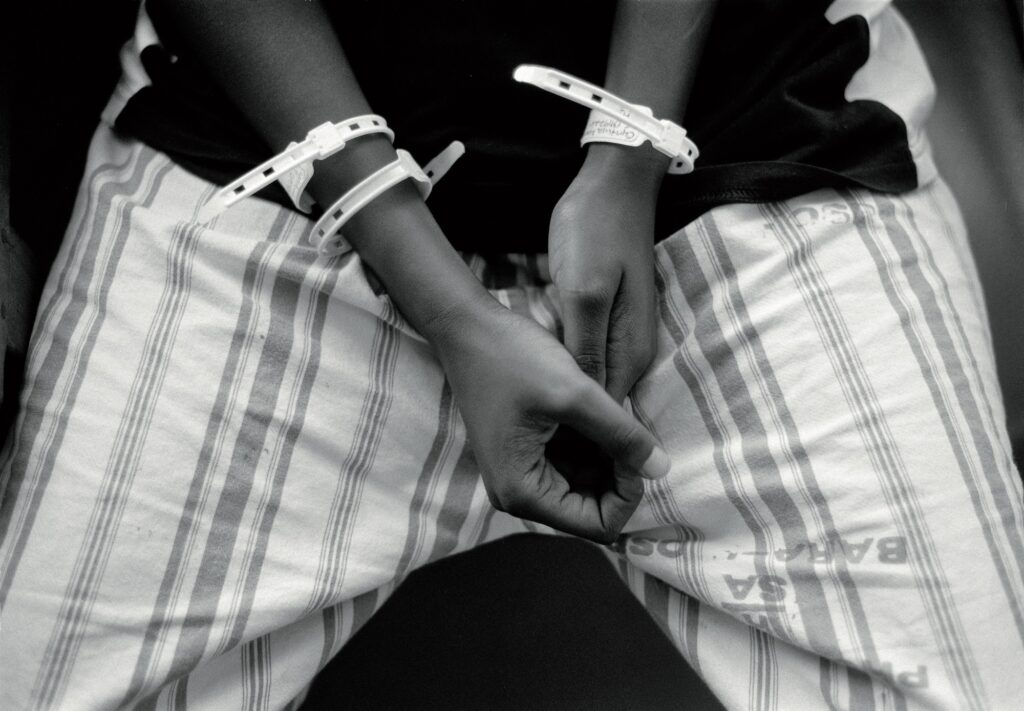
In the series “Only Half the Picture,” Muholi groups the images “Case Number,” ”Hate Crime Survivor I” and “Hate Crime Survivor II” (all 2003 and 2004) together. While the photographs individually operate as fragments, when combined they suggest the legal, medical, and emotional sides for hate crime victims. In “Case Number” Muholi simply photographed a document stamped with by the Soweto Police Department indicating the crime as rape and assault with administrative notes. To humanize hate crime victims and the emotional components, Muholi presents a tightly cropped image of a victim’s hands held in their lap with multiple medical wrist bands. Focusing on the hands, where the wristbands and pose suggest the helplessness and immobility of handcuffs, Muholi’s cropped image captures the pain while refraining from revealing the individual’s face.
Additionally, Muholi presents a wider shot of a hospital bed where a blanket covers an unidentified individual. As the blanket signals the victim’s unavailability, Muholi distances their camera. As the camera documents, it potentially also exploits and intrudes; Muholi’s subjective camera relies upon proximity or distance as a gesture of respect and that allows anonymity for these victims.
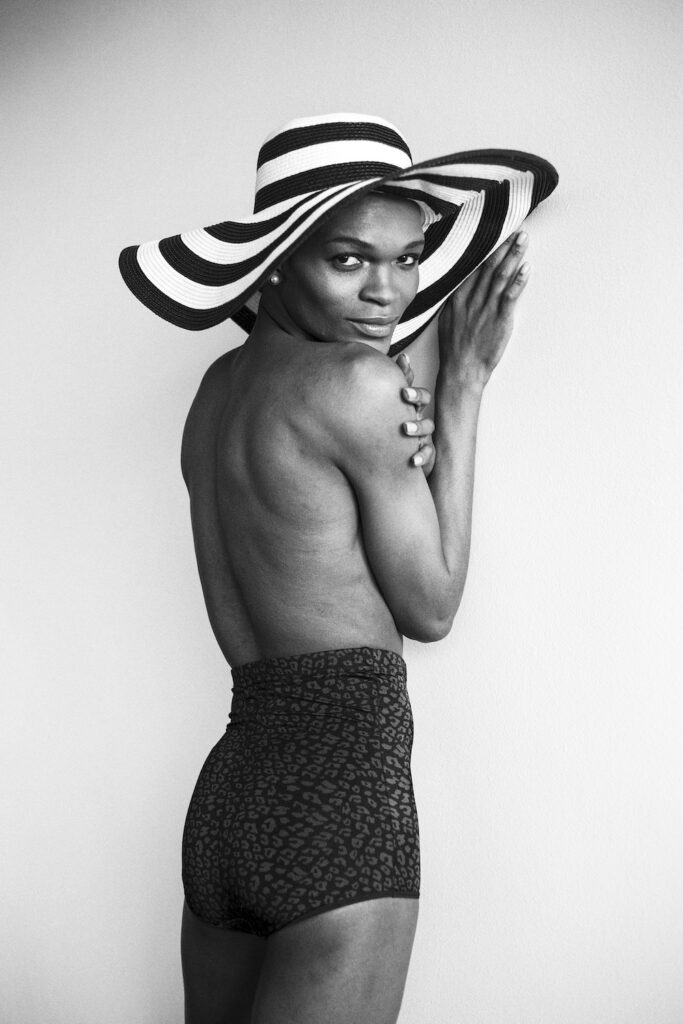
In contrast, within the same gallery Muholi also presents “Brave Beauties,” a series of four confident photos of queer beauty pageant winners. In “Yaya Mavundla, Parktown, Johannesburg” (2014, 2003) the subject dons a fetching striped sun hat while gracefully looks over their shoulder and in “Somizy Sincwala, Parktown, Johannesburg” (2014, 2023) the subject is dramatically posed with one hand on a hip and the other resting on their shoulder. Muholi’s sensitive black-and-white tonal values beautifully render their skin, hair, and clothing. Moreover, Muholi’s white backdrops foregrounding the sitters, highlighting them; these images create spaces for the sitters to present themselves and play with desire and their own visibility. While the beauty pageant winners may not all directly return the camera’s gaze, they are proudly present in their own space.
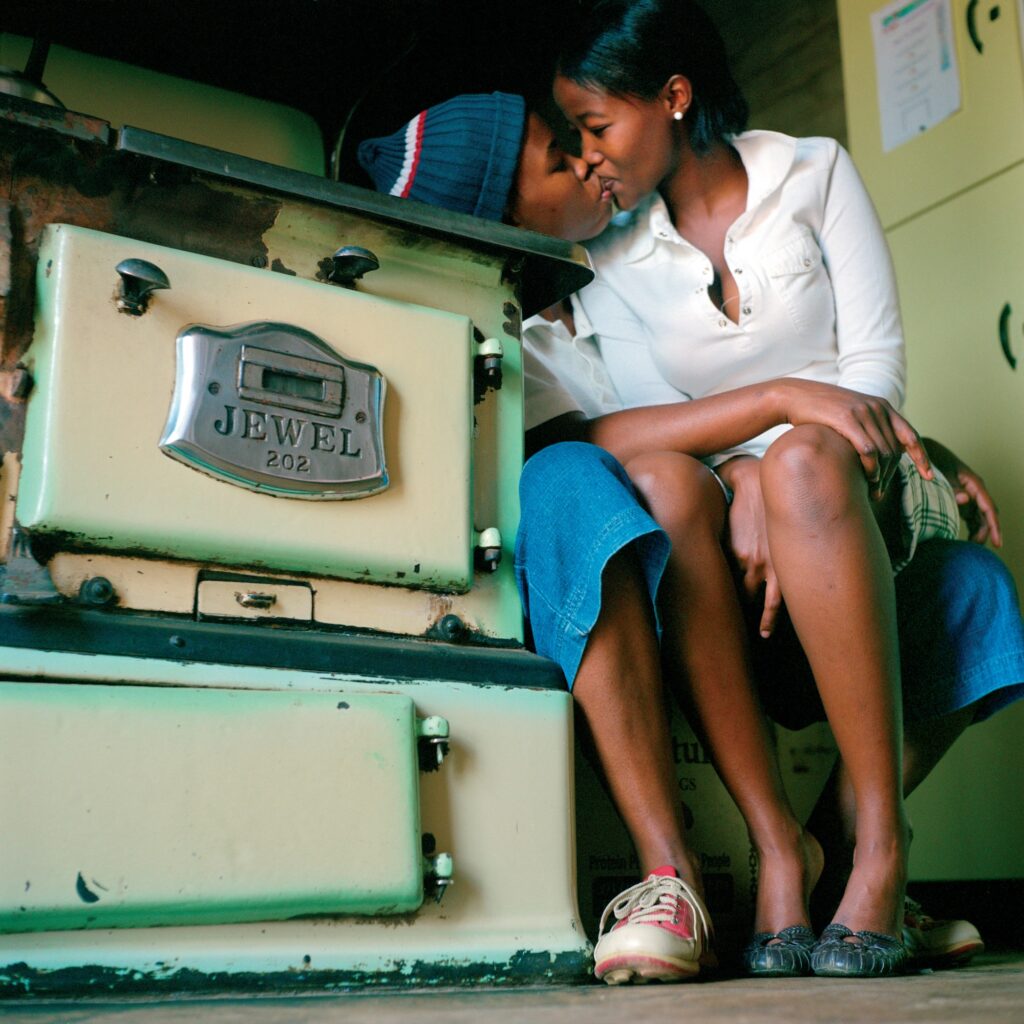
With the next gallery primarily dedicated to couples, Muholi excitingly introduces some stunning color photographs into their repertoire of black-and-white work. With couples engaged in bathing, embracing, and kissing, Muholi moves beyond the tragedy and poses of the previous galleries to hold space for the intimacy and beauty of mundane life. In “Nomsa Mazibuko and Fondo, outside the Hope Unity Metropolitan Community Church, a gay church, during Good Friday, Mayfair, Johannesburg” (2007, 2023), Muholi simply presents a couple with a child on a park bench dressed for church service. The pink church roof and dress shirt and the green leaves and church gutters produce a rich color composition out of a seemingly ordinary family outing.
With a much more spacious composition, in “Nando Maphisa and Mpho Sib” (2007, 2023) the light blue sky fills much of the image. Shot from below, with the couple posed back-to-back in the foreground, they tower over the greyed buildings in the background. With striking compositions and color, Muholi’s politics become more about beautifully honoring queer couples as they fluidly move through everyday life and society.
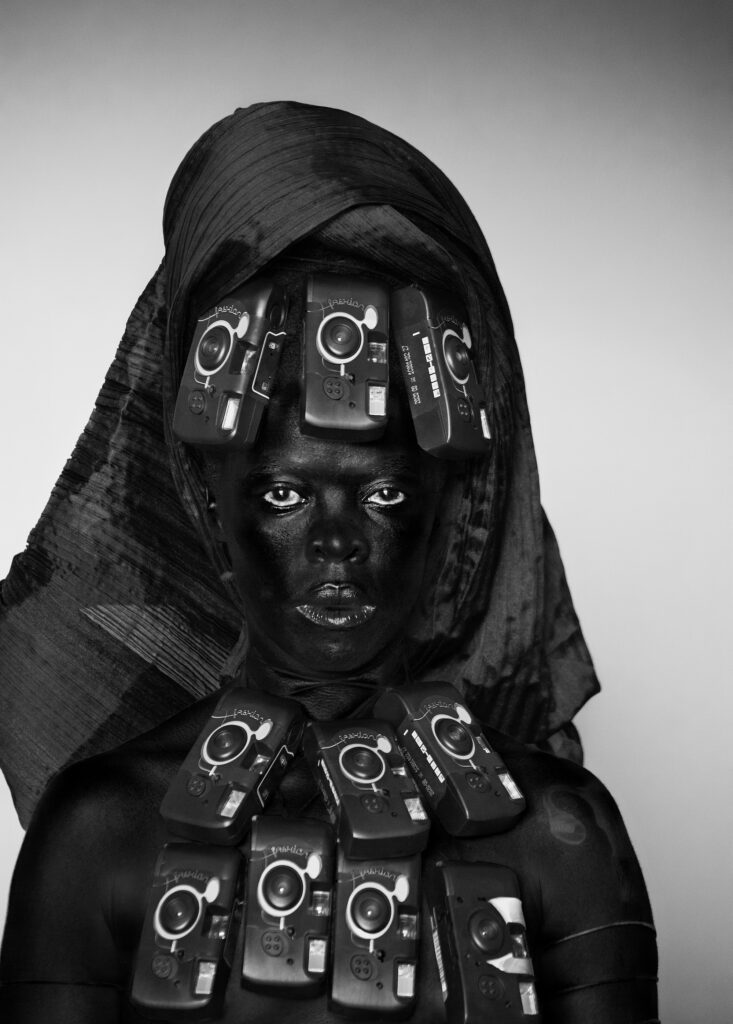
As Muholi considers their work as a form of visual activism, their images probe the desire to be visible while ensuring that visibility is consensual, nurturing, and self-authored. While Muholi balances joyous representation while addressing the violent consequence of visibility, they also honor the small moments of intimacy and tenderness. Throughout the exhibition, Muholi shines in their narrative suggestions, where their queer politics are embodied in the ambiguity, intimacy, range, and quantity of images. As the exhibition wraps up with 32 large black-and-white portraits, a small portion of the over 300 works in their epic series “Faces and Phases,” viewers are left to behold and witness some of the many individuals within the South African LGBTQ+ communities.


